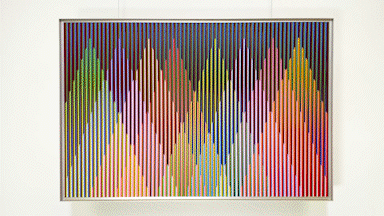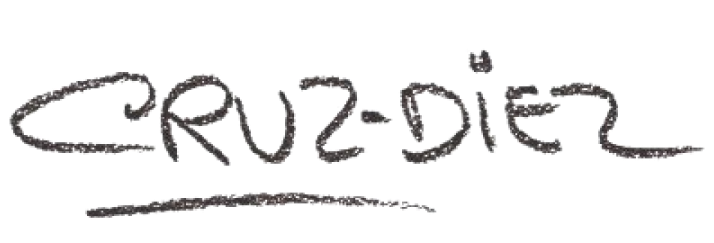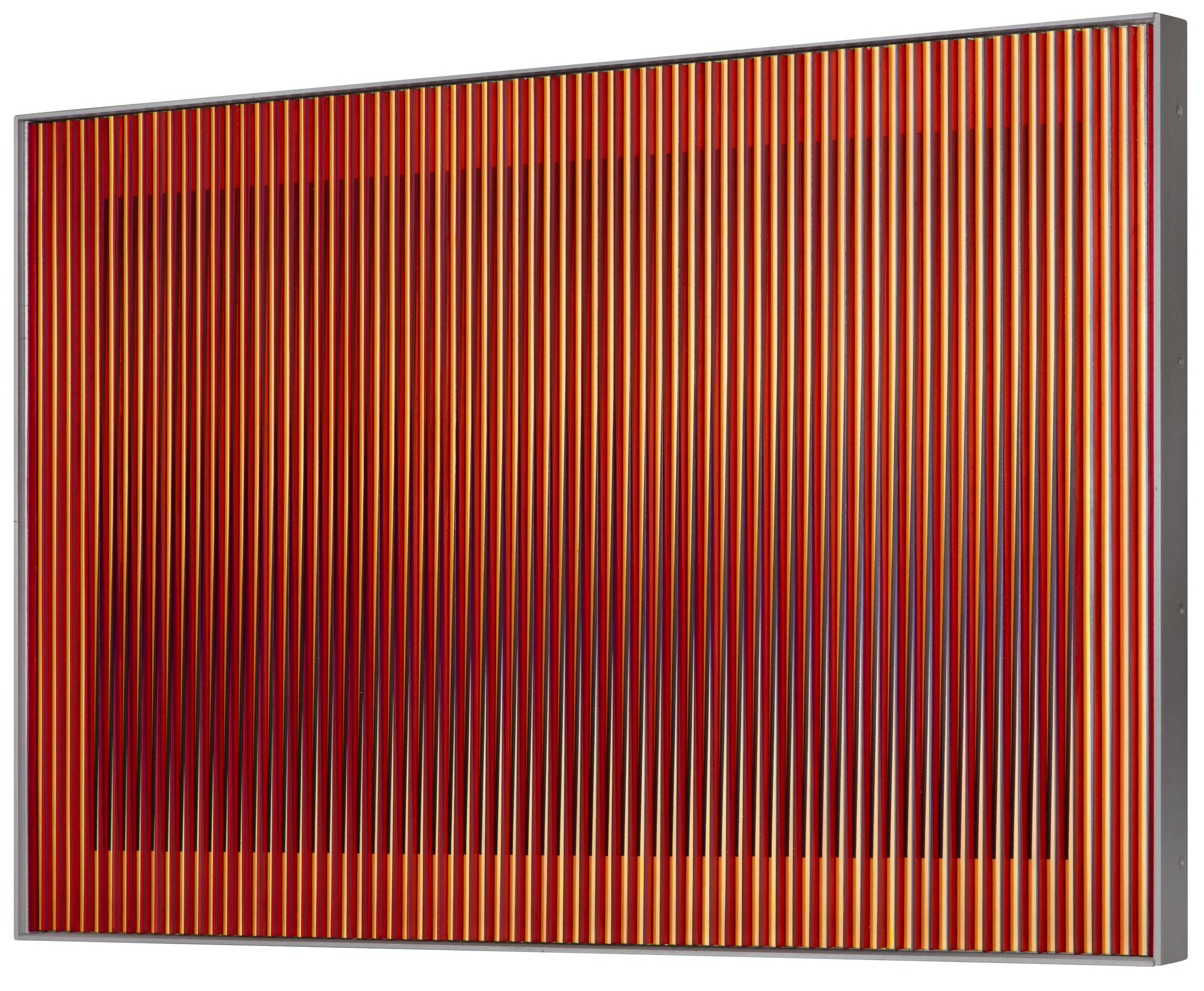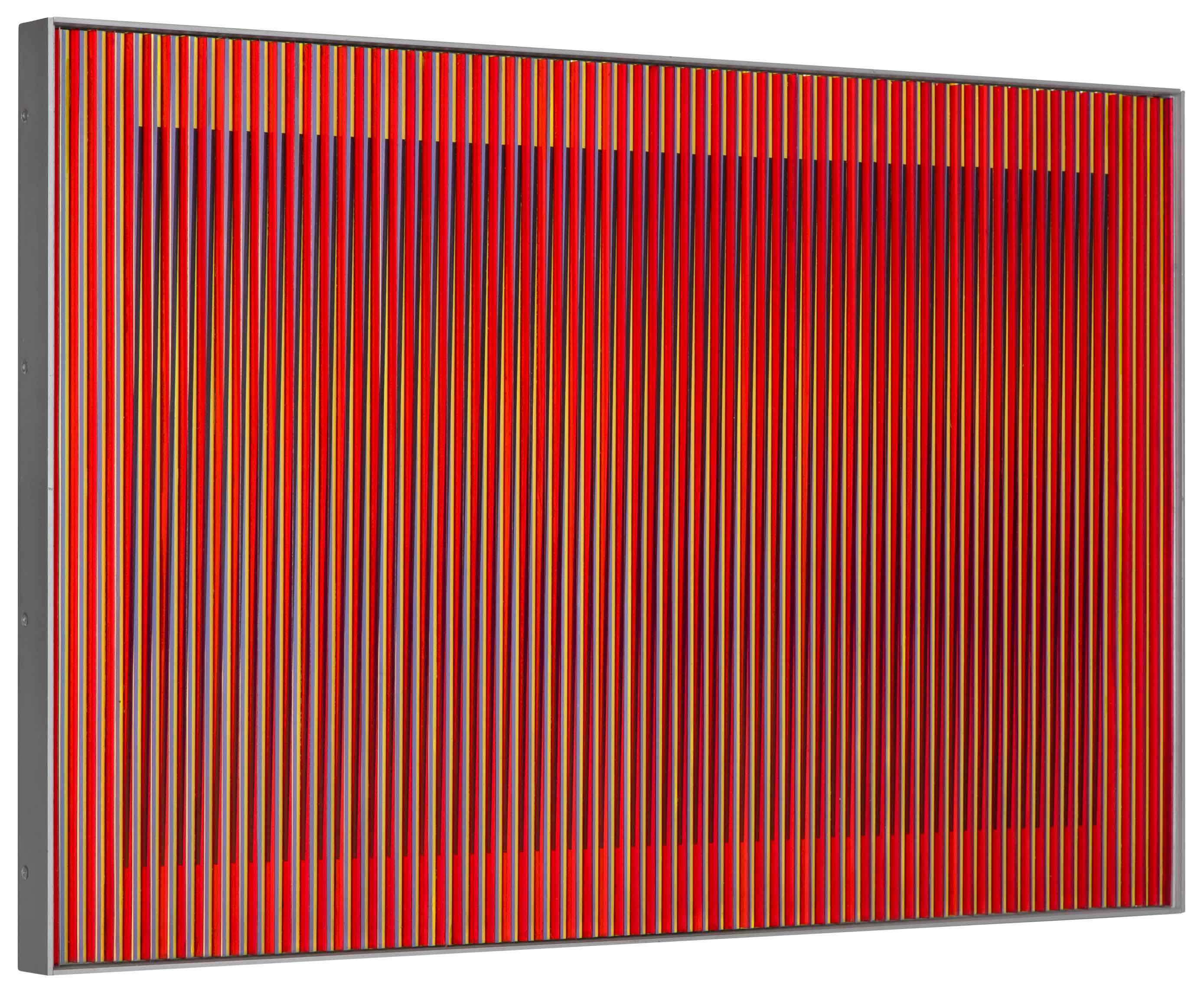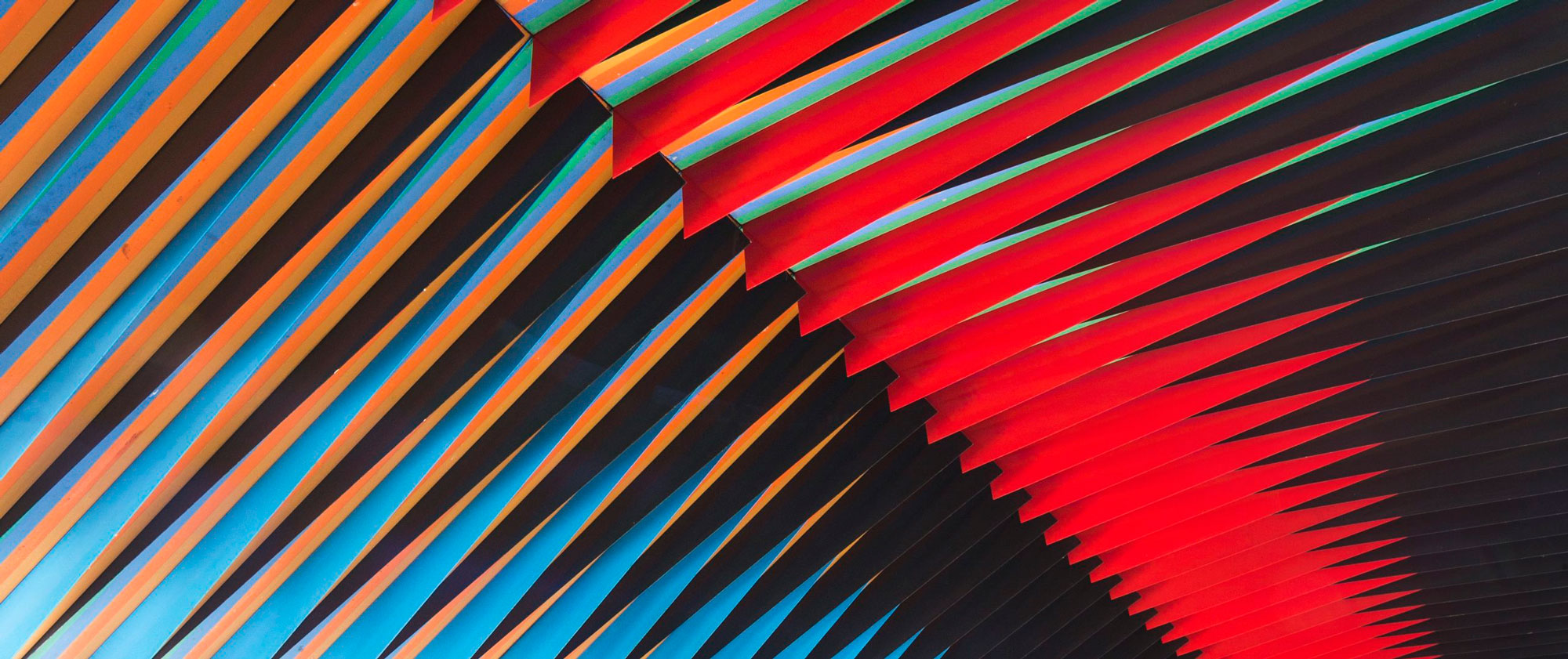
The Physichromie (1959) is a structure designed to reveal certain circumstances and conditions related to color, changing according to the movement of the viewer and the intensity of the light, and thus projecting color into space to create an evolutionary situation of additive, reflective, and subtractive color.
A Physichromie acts as a “light trap” in a space where a series of color frames interact; frames that transform each other, generating new ranges of colors not present on the support. Thus, the color fills the space confined between the vertical sheets — light-modulators — that cover the entire work. In addition, due to the effects of the viewer or light source, a series of color variations are created in them, similar to those observed in the real space of the landscape.
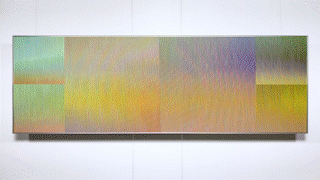
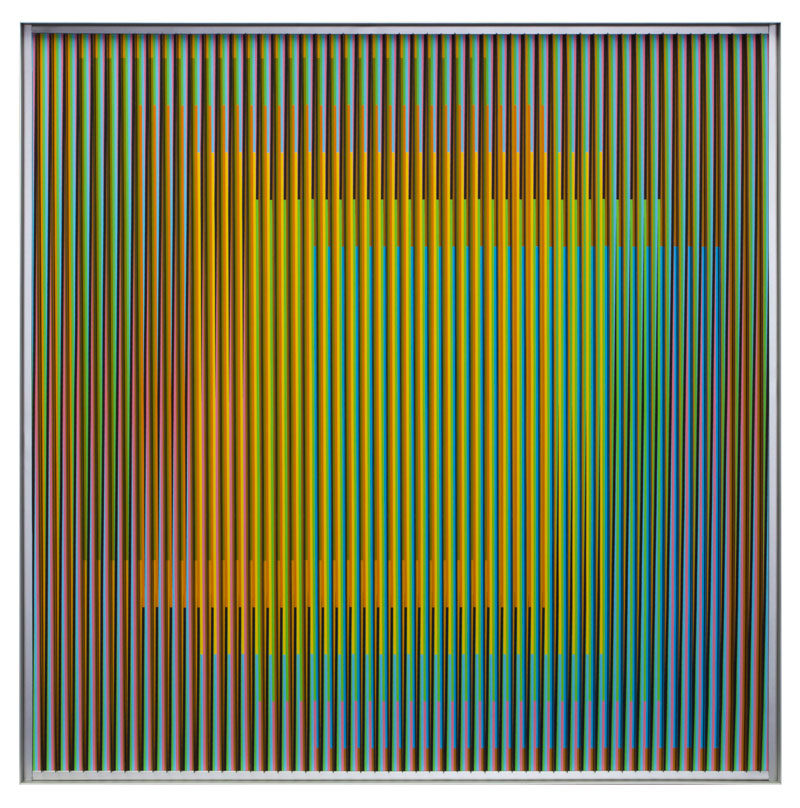
The work is designed to be viewed from multiple angles. Depending on the viewer’s position in relation to the work, the color across its surface alters radically, transforming from one chromatic range to another as the viewer moves in front of it.
Judith Wilkinson, curator and art writer – The Art Newspaper, 2019

